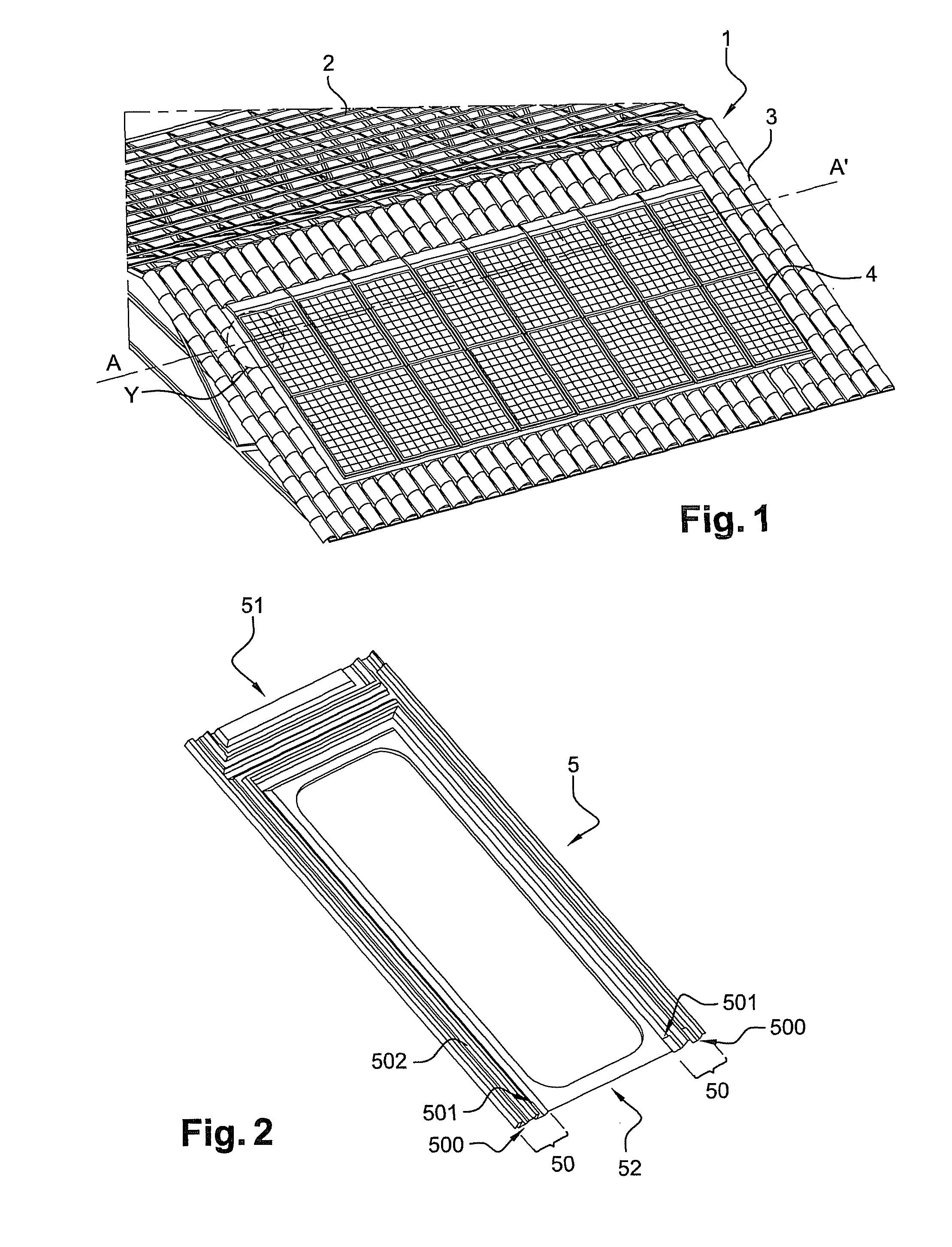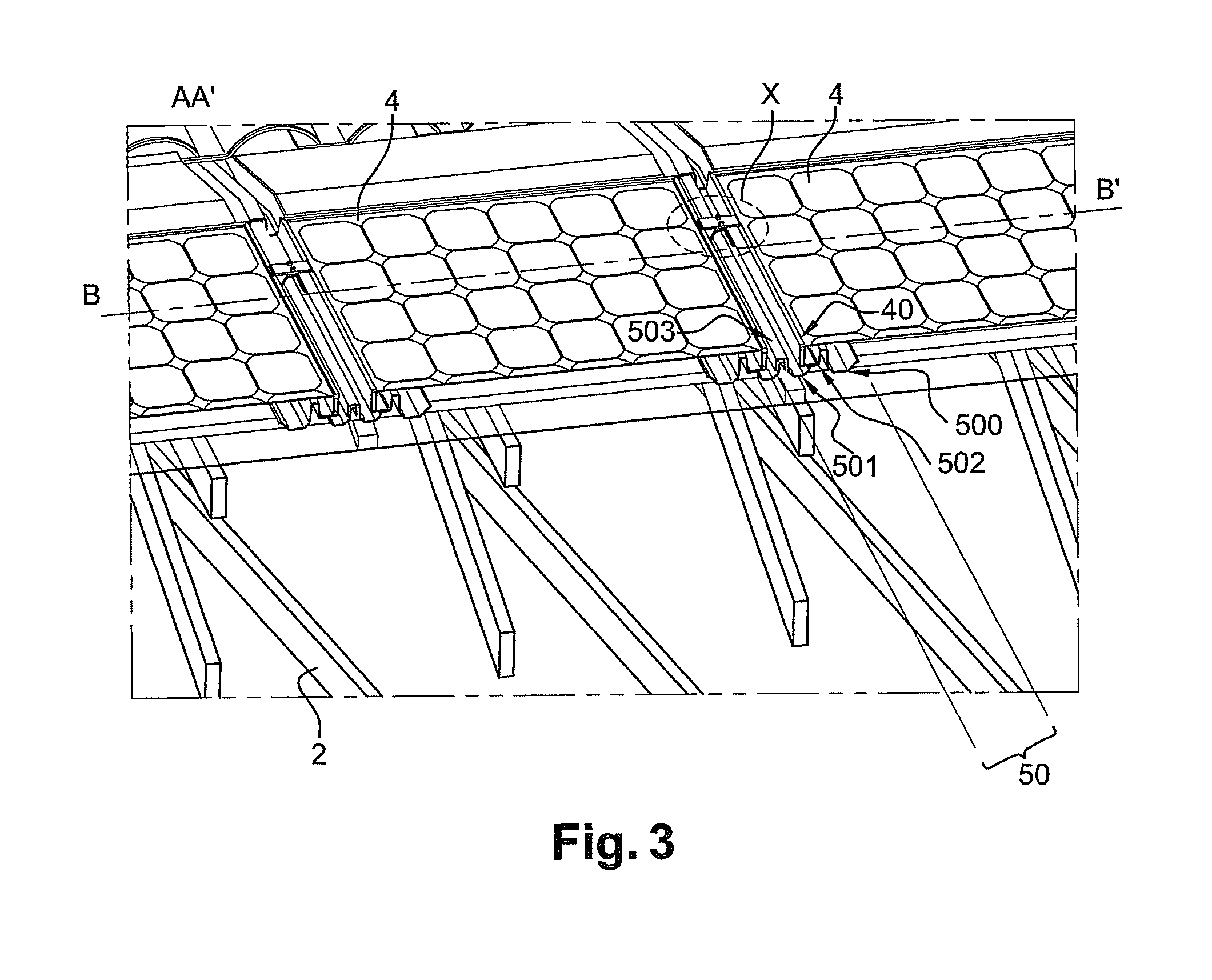Structure for rigidly connecting solar panels to a fixture
a technology for solar panels and fixtures, applied in the field of solar panels, can solve the problems of increasing the overall cost, reducing the service life of solar panels, and not ensuring the sealing
- Summary
- Abstract
- Description
- Claims
- Application Information
AI Technical Summary
Benefits of technology
Problems solved by technology
Method used
Image
Examples
Embodiment Construction
[0073]FIG. 1 shows diagrammatically a portion of a roof covering 1 secured directly to a fixture 2, constituted in the case in point by a wooden roofing framework. The covering 1 comprises in particular tiles 3 and solar panels 4. It may be seen that these panels are integrated into said roofing, in the sense that they help to seal it.
[0074]A panel or solar module 4 commonly comes in the form of a set of photovoltaic cells surrounded by an aluminum frame. Each of the solar modules 4 is secured directly to the fixture by means of a structure or rigid connection device.
[0075]The rigid connection structure includes in particular a plurality of frames, in the case in point one frame per solar panel, on which the selvages or edges of said panel rest, tightening means capable of holding the panel selvages on the frame, and means for securing the frame to the fixture.
[0076]The frame 5, shown in FIG. 2, is formed in particular by at least two longitudinal sections 50 intended to be arranged...
PUM
 Login to View More
Login to View More Abstract
Description
Claims
Application Information
 Login to View More
Login to View More - R&D
- Intellectual Property
- Life Sciences
- Materials
- Tech Scout
- Unparalleled Data Quality
- Higher Quality Content
- 60% Fewer Hallucinations
Browse by: Latest US Patents, China's latest patents, Technical Efficacy Thesaurus, Application Domain, Technology Topic, Popular Technical Reports.
© 2025 PatSnap. All rights reserved.Legal|Privacy policy|Modern Slavery Act Transparency Statement|Sitemap|About US| Contact US: help@patsnap.com



